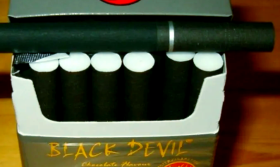Overcoming Creative Block: The Hidden Challenge of Mental Fatigue When Quitting
Introduction
Creativity is a delicate balance of inspiration, focus, and mental energy. However, when individuals attempt to quit a habit—whether it's smoking, excessive social media use, or even a toxic relationship—they often face an unexpected adversary: creative block due to mental fatigue.
This phenomenon occurs because the brain, overwhelmed by withdrawal and the effort of self-control, struggles to maintain its usual creative output. Understanding this connection can help individuals navigate the transition more effectively and reclaim their creative spark.
The Science Behind Mental Fatigue and Creativity
1. Cognitive Load and Decision Fatigue
When quitting a habit, the brain expends significant energy resisting cravings and making conscious choices to avoid relapse. This cognitive load depletes mental resources, leaving less capacity for creative thinking.
- Decision fatigue: Every act of self-control weakens subsequent willpower (Baumeister et al., 1998).
- Reduced working memory: Mental exhaustion impairs problem-solving and idea generation (Kahneman, 2011).
2. Dopamine Deprivation and Motivation
Many habits (e.g., smoking, sugar, social media) trigger dopamine release, reinforcing addictive behaviors. When quitting, the brain experiences a dopamine deficit, leading to:
- Lower motivation
- Diminished enthusiasm for creative tasks
- Increased mental fog
3. Stress and Cortisol Levels
Withdrawal often induces stress, raising cortisol levels. Chronic stress:
- Narrows focus (making it harder to think divergently)
- Impairs memory retrieval (affecting creative associations)
- Triggers mental exhaustion
How Creative Block Manifests When Quitting
1. Difficulty Generating Ideas
- The brain defaults to familiar patterns, making novel connections harder.
- Writers, artists, and designers report feeling "stuck" during withdrawal.
2. Procrastination and Avoidance
- Mental fatigue leads to avoidance of challenging creative tasks.
- Instead of working, individuals may scroll mindlessly or engage in unproductive activities.
3. Self-Doubt and Perfectionism
- The brain, already strained, amplifies negative self-talk.
- Fear of failure paralyzes creative output.
Strategies to Overcome Creative Block During Withdrawal
1. Prioritize Rest and Recovery
- Sleep: Essential for cognitive restoration.
- Short breaks: Pomodoro technique (25-min work, 5-min rest).
- Mindfulness meditation: Reduces stress and enhances focus.
2. Engage in Low-Stakes Creativity
- Freewriting / doodling: No pressure, just flow.
- Consumption over creation: Read, watch, or listen to inspiring content.
3. Replenish Dopamine Naturally
- Exercise: Boosts endorphins and clarity.
- Novelty: Try new experiences to stimulate the brain.
- Small wins: Celebrate progress to rebuild motivation.
4. Reduce Decision-Making Burden
- Routines: Automate daily choices (e.g., meal prep, work schedule).
- Limit distractions: Block social media during creative hours.
5. Reframe the Creative Process
- Embrace imperfection: First drafts are supposed to be messy.
- Set micro-goals: "Write 100 words" instead of "Finish a chapter."
Conclusion
Quitting a habit is mentally taxing, and the resulting fatigue can stifle creativity. However, by understanding the underlying mechanisms—cognitive load, dopamine withdrawal, and stress—individuals can adopt strategies to mitigate creative block.
The key lies in self-compassion, structured recovery, and small, consistent efforts. Over time, as the brain adapts, creativity will return—often stronger than before.
Final Thought
"Creativity is not a finite resource; it’s a flame that flickers under stress but can be reignited with patience and care."
Tags: #Creativity #MentalFatigue #QuittingHabits #CreativeBlock #Productivity #BrainScience #Dopamine #StressManagement #SelfImprovement
(Word count: ~1000)
Would you like any refinements or additional sections?













